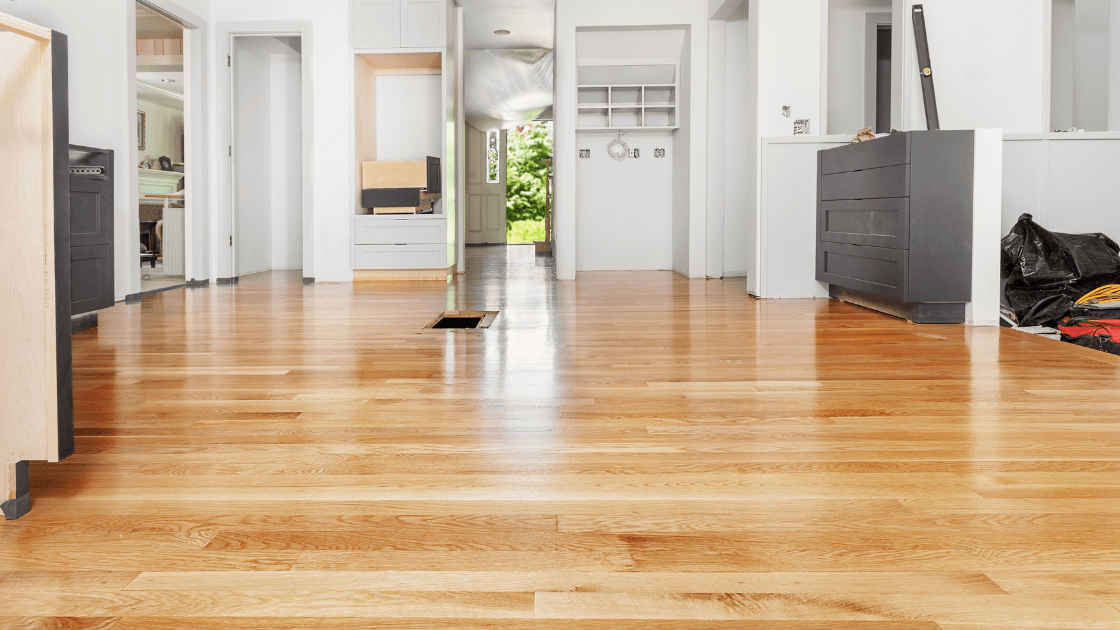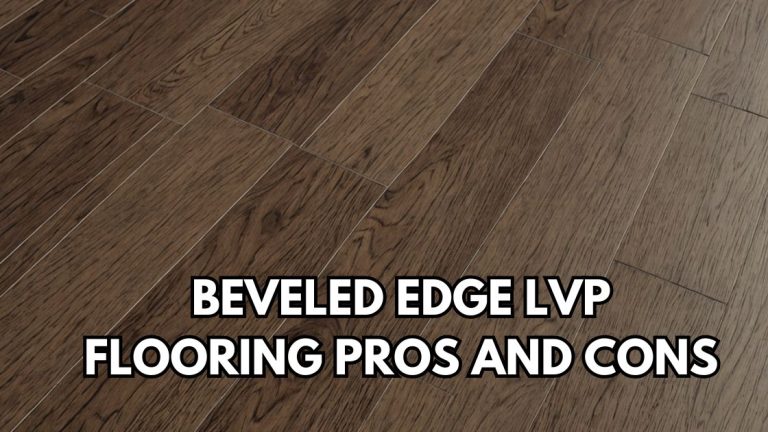What Is Floor Waxing? 5 Benefits and Easy Steps to Follow
When you walk into a well-maintained home or commercial space, the gleaming floors often catch your eye. The reason behind this glossy, polished surface could very well be floor waxing. But what exactly is floor waxing, and why should you consider it for your floors? In this article, we will explore the basics of floor waxing, its benefits, the types of floors that can benefit from it, and how you can apply it effectively.
Floor waxing is a process that involves applying a protective layer of wax to floors to enhance their appearance and provide long-lasting protection. Whether you’re dealing with hardwood, vinyl, or even concrete floors, waxing creates a glossy finish and shields the surface from everyday wear and tear. But is it the right choice for your space? Let’s dive deeper into understanding what floor waxing is and how it works.
What is Floor Waxing?
Floor waxing is a technique used to protect and enhance the appearance of floors. Typically, a blend of natural or synthetic waxes, like beeswax or carnauba wax, is applied to the surface. This layer of wax forms a protective coating that adds shine, prevents scratches, and helps maintain the floor’s integrity over time.
The wax works by filling in small gaps and pores in the floor surface, reducing the amount of dirt and grime that can penetrate.
The process of waxing involves spreading a thin layer of wax onto a clean floor surface and allowing it to dry. Once the wax hardens, it forms a hard, protective seal that can withstand regular foot traffic. To achieve a high-gloss finish, the wax is buffed, enhancing its appearance and durability.
Try our Floor Waxing Calculator
The History Behind Floor Waxing
Floor waxing has been around for centuries. Originally, it was used as a way to enhance the beauty of natural wood floors, as well as to protect them from damage. Early floor waxes were made from beeswax and other natural substances, which were applied by hand.
Over time, the process evolved with the introduction of synthetic waxes, making the process more efficient and accessible.
Why is Floor Waxing Important?
Floor waxing serves multiple purposes beyond aesthetics. Here are some key reasons why waxing your floors can be an excellent choice for your home or business:
1. Protection from Wear and Tear
Flooring, especially in high-traffic areas, is prone to scratches, stains, and general wear over time. Wax creates a barrier between the floor and potential damage, helping to preserve the surface. Whether it’s spilled food, dirt, or scuffs from furniture, the wax layer absorbs much of the impact, keeping the floor underneath safe.
2. Enhances Appearance
One of the most noticeable benefits of floor waxing is the high-gloss finish it provides. This shine not only makes floors look cleaner but also adds a level of sophistication and elegance. Whether it’s hardwood, tile, or concrete, waxing can bring out the best in the floor’s natural beauty.
3. Easier to Clean
Waxed floors are much easier to clean than untreated ones. The smooth, shiny surface makes it more difficult for dirt and grime to cling to the floor. As a result, regular cleaning becomes more efficient, and less effort is required to maintain a pristine appearance.
4. Longer Lifespan of Flooring
By regularly waxing your floors, you protect them from the wear and tear that occurs over time. This can help extend the life of your flooring, saving you the cost and hassle of frequent repairs or replacements. Floor waxing reduces the need for costly professional maintenance and ensures that your floors look great for years to come.
5. Non-Slip Surface
Waxing creates a smooth, polished surface that’s not only visually appealing but also safer. Floors with a wax finish tend to be less slippery than untreated floors, especially when they are buffed to a high shine. This can be particularly beneficial in homes with children or businesses that receive a lot of foot traffic.
Types of Floors That Benefit from Waxing
Not all floors are suitable for waxing, but many common types of hard floors can benefit significantly from this process. Here’s a breakdown of the types of flooring that respond well to waxing:
Hardwood Floors
Hardwood floors are among the most popular types of flooring that benefit from waxing. Wax adds an extra layer of protection, helps hide minor scratches, and brings out the natural beauty of the wood grain. It is important to note, however, that some modern hardwood floors are pre-finished and may not require waxing. Always check the manufacturer’s guidelines before waxing.
Vinyl Floors
Vinyl flooring is a cost-effective and durable choice for many homes and businesses. Waxing vinyl floors provides an extra layer of protection, adds a glossy finish, and makes them easier to clean. However, excessive wax buildup on vinyl floors can lead to a sticky surface, so it is essential to apply the right amount and strip the wax regularly.
Linoleum Floors
Like vinyl, linoleum floors are another type that responds well to waxing. Linoleum can be prone to scratches and stains, and waxing helps seal these porous surfaces. A well-maintained wax layer will also enhance the floor’s appearance and make it easier to maintain.
Concrete Floors
Concrete floors, especially in industrial or commercial spaces, can greatly benefit from waxing. Waxing helps protect the surface from stains and damage while giving it a sleek, polished look. Concrete floors in homes can also be waxed to provide a durable and attractive finish.
How to Apply Floor Wax: A Step-by-Step Guide
Now that you understand the importance of floor waxing, let’s look at the step-by-step process of applying wax to your floors. It’s essential to follow the correct steps to achieve the best results and avoid damaging your floor.
Step 1: Clean the Floor Thoroughly
Before applying any wax, make sure the floor is completely clean. Sweep or vacuum the floor to remove dust, dirt, and debris. Then, mop the floor using a mild floor cleaner. If there is old wax on the floor, you may need to strip it using a specialized stripping solution before proceeding.
Step 2: Apply the Wax
Once the floor is clean and dry, it’s time to apply the wax. Use a clean cloth or a waxing applicator to spread a thin, even layer of wax across the surface. Be sure to apply the wax in small sections to avoid streaking. Follow the manufacturer’s instructions for the specific wax you’re using.
Step 3: Allow the Wax to Dry
After applying the wax, allow it to dry completely before moving on to the next step. The drying time may vary depending on the type of wax, but typically, you should let it dry for at least 15-30 minutes. Avoid walking on the floor while it’s drying to prevent smudging.
Step 4: Buff the Floor
Once the wax has dried, use a floor buffer or a soft cloth to buff the floor. This step enhances the shine and helps the wax bond better to the surface. Buffing also removes any excess wax and evens out the finish. For the best results, you may need to apply multiple layers of wax, repeating the process as needed.
Step 5: Maintain the Waxed Floor
To maintain the shiny finish and protection, it’s essential to keep the floor clean and reapply wax as needed. Most floors will need a fresh coat of wax every six months to a year, depending on the level of foot traffic.
Try our Floor Waxing Calculator
Common Mistakes to Avoid When Waxing Floors
While floor waxing can provide numerous benefits, there are some common mistakes that you should avoid to ensure a flawless finish:
1. Using the Wrong Wax
Not all waxes are suitable for every type of floor. Always choose a wax specifically designed for your floor type to achieve the best results.
2. Over-Waxing
Applying too many layers of wax can lead to buildup, making the floor slippery and dull. Apply thin layers and buff after each application to avoid this issue.
3. Skipping the Stripping Process
If your floor already has an old layer of wax, skipping the stripping process can result in uneven coverage and a poor finish. Stripping old wax is essential before applying a new layer.
Conclusion
In conclusion, floor waxing is a highly effective technique for protecting and enhancing the beauty of your floors. Whether you have hardwood, vinyl, or concrete floors, waxing can provide a durable, glossy finish that helps protect against wear and tear.
By following the proper steps and avoiding common mistakes, you can ensure that your floors look great for years. Remember that regular maintenance, such as stripping and reapplying wax, is necessary to maintain that flawless shine and protection.








